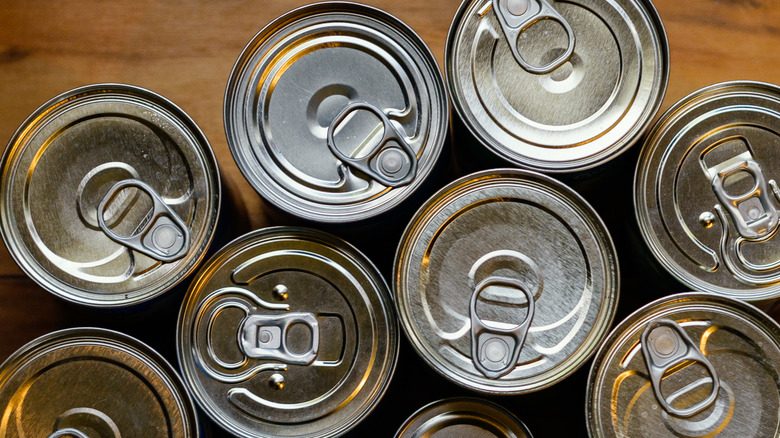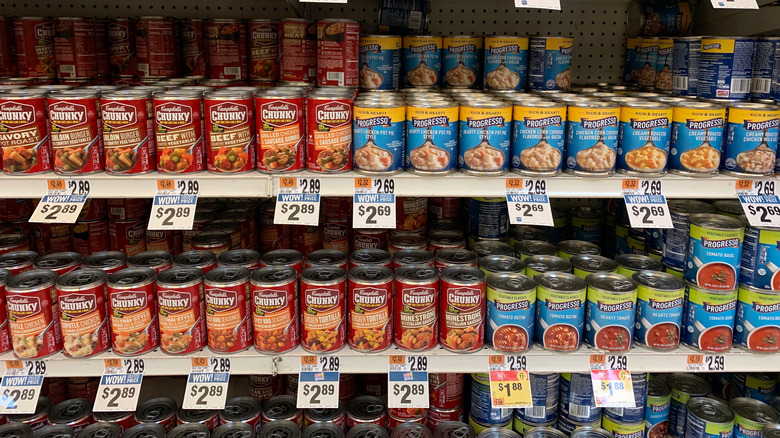The Reason Not All Canned Foods Have A Pull Tab
Pull tabs on canned foods are one of the modern-day conveniences we take for granted. You pull those little tabs up and back, and voila, your can of soup is ready to heat up, eliminating the need for a can opener, which is nothing short of amazing. In fact, whether or not a can has one of those tabs can influence whether or not we purchase it. We can trace the blossoming of our love affair with these tabs all the way back to 2014 when, per Packaging Digest, a survey revealed we are willing to pay more for this option.
Pull tabs make opening a can elementary and it begs the question, why don't all canned foods come equipped with this tab? The answer is all about the money. Because pull tab tops are more expensive to manufacture than traditional can tops, convenience isn't always feasible or profitable. This is especially true if the canned vegetable, soup, fruit, or meat isn't a big-name brand.
Not necessarily the case outside the U.S.
Business is all about profits and big trusted named brands are more likely to have these pull tabs because they already have a large, loyal, and established customer base. Translation: They are going to make money and we are willing to let them pass along the cost of the convenience tab to us as consumers because we trust the product. Meanwhile, lesser-known bands are still building that trust.
But even big-name canned food companies can opt to stick to those traditional ends. This can be the case when doing business outside the U.S. because cans with sanitary ends are easier and more cost-effective to transport in comparison to pull tabs. This is due to the fact that cans with these traditional tops are less likely to fall victim to being punctured, which is a true concern for brands doing business in countries that are still developing. So, the next time you pull that tab to open your can of tomatoes or corn, just know, you are paying extra for it.

